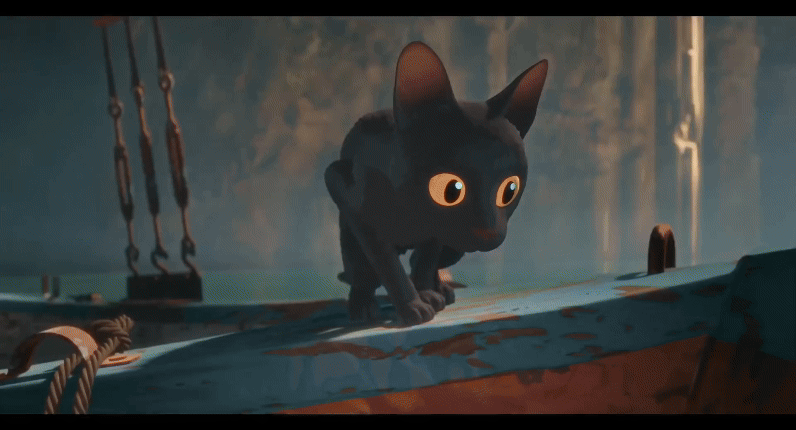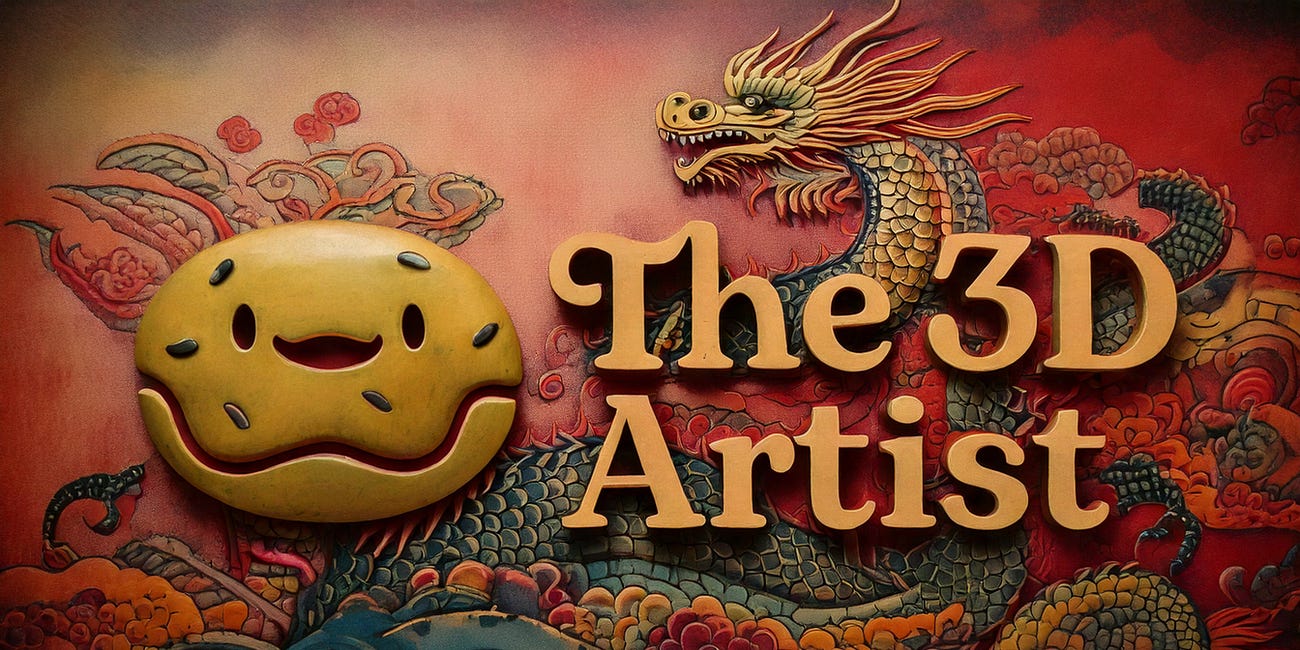What If the VFX Industry Doesn't Come Back?
Four Choices Every 3D Artist Must Make Right Now
This past week, the VFX community was rocked by some dire news: Technicolor is shutting down its operations.
This includes The Mill, MPC, Mikros Animation, and Technicolor Games. Thousands of artists will be out of work all over the world. And with that closure, we’re watching one of the pillars of the VFX industry disappear—a company that has been a staple in film, TV, and gaming for decades.
When this news broke, it reinforced a thought that had been nagging at me for a while. A whisper that turned into a solid, unavoidable voice in my head:
What if the VFX industry, as we knew it, never actually comes back?
The False Hope of “Getting Back to Normal”
For the past couple of years, I’ve heard people ask, “When is VFX coming back?”—as if it’s just a matter of waiting for the industry to recover. When will we see more job postings? When will studios expand again? When will blockbuster movies and AAA games flood the market once more?
But the longer this drags on, the more I wonder if we’re not experiencing a temporary downturn, but rather a permanent shift.
Before 9/11, airports were open spaces of connection. You could walk family members right up to the gate, meet loved ones the moment they stepped off the plane, and move through security with minimal hassle. Then came the attacks, and in their aftermath, security ramped up. At first, people believed these were temporary measures—just something to get us through the crisis.
But the world never went back.
We still take off our shoes. We still chug our water bottles like a bunch of frat boys. And we've all had to come to terms with the fact that we will never run through the airport to chase our love down as they are about to board pleading with them to not get on the damn plane!!!
We adapted to a new normal.
Some disruptions aren’t just setbacks. They mark fundamental transformations. And my concern is that many VFX artists are waiting for something that isn’t coming back.
A Structural Shift in Entertainment
Just a few years ago, the entertainment industry was booming.
Streaming services were racing to fill their platforms with new content. Netflix was greenlighting animated projects at breakneck speed. Game studios were expanding rapidly, churning out high-end titles.
Now? That momentum has collapsed.
Streaming companies have realized their business models aren’t sustainable. They’re scaling back, raising prices, and losing subscribers. Studios are more risk-averse than ever, slashing projects and struggling to monetize films in the post-theatrical era. Gaming giants are facing rising costs and shifting consumer habits.
This isn’t just a slump. It’s an industry-wide recalibration. And that’s bad news for artists everywhere.
VFX, Animation, and Gaming are often complementary craft—it exists to serve the larger entertainment ecosystem. If studios aren’t greenlighting as many projects, there simply isn’t as much demand for VFX jobs.
If audiences are losing interest in CGI-heavy blockbusters… if game companies are pivoting away from ultra-expensive development cycles… if movie theaters continue to struggle… then where does that leave us?
You Have Four Choices
1. Keep Waiting
You can wait it out, assuming I’m wrong and that the industry will bounce back. Maybe it will. Maybe in a few years, things will shift again, and major studios will suddenly need VFX artists en masse.
I've been wrong many times before.
20 years ago, I was convinced we would all be in autonomous vehicles by now but I still have to parallel park like some jabroni.
2. Pivot to Other Industries
If you’re open to change, there are plenty of other industries using 3D artists:
Product visualization
Fashion and footwear design
Industrial design
Architecture and ArchViz
Medical visualization
Education and training simulations
This is what I did a few years ago, and I couldn’t be happier with the result. There are countless opportunities beyond entertainment that could offer you more money, more stability, and more remote opportunities.
3. Leave the Industry
No shame in this one. You have bills to pay. You have a life to live. If the stress and instability of entertainment work aren’t worth it, there are plenty of ways to build a great career elsewhere.
4. Build the Next Big Thing
If you can’t shake the entertainment bug, then maybe this is your chance to build something new.
The Big Players Won’t Adapt—But You Can
For the last twenty years, VFX and animation have been structured like massive factories—assembly lines built to churn out content. These pipelines worked as long as demand was high. When audiences wanted more movies and games, studios expanded, hired more workers, and kept the machine running.
But now, those factories are crumbling.
The demand for entertainment is still there—people still want to be entertained—but the traditional production model isn’t working anymore. Big studios are too bloated, too slow, and too expensive to pivot quickly. They have massive overheads, entrenched leadership, and deeply ingrained production methods that make it nearly impossible for them to adapt at the pace the industry now demands.
This creates an opportunity for smaller, more agile creators. Independent filmmakers, game developers, and real-time content creators have the flexibility to experiment and innovate in ways that large studios cannot. With new technology like Unreal Engine, AI-assisted workflows, and decentralized content distribution, the barriers to entry are lower than ever before.
Historically, periods of disruption in entertainment have led to some of the most exciting innovations:
Indie games thrived when big publishers became risk-averse, leading to breakout hits like Hollow Knight and Hades.
YouTube and streaming platforms revolutionized how we consume video content, allowing independent creators to build massive audiences without the need for traditional media gatekeepers.
Real-time technology has opened doors for entirely new methods of production, reducing costs and timelines for storytelling.
So the question isn’t whether entertainment will survive—it will. The real question is: Who will lead the next wave of innovation?
If you’re waiting for the big players to figure it out, you might be waiting a long time. But if you’re willing to take risks, experiment with new technology, and forge your own path, this could be the most exciting time to be a creator.
Don’t Wait for the Industry to Save You—Go Build the Future
The hard truth is that the VFX industry might not bounce back to its old state.
But that doesn’t mean 3D storytelling is dead. It means we need to rethink how it’s done.
There is an opportunity here for artists who are bold enough to create something new.
So don’t just wait for the job market to recover. It might not. Instead, start looking for ways to shape the future of entertainment on your own terms.
Because the need is still there.
And someone is going to figure out how to meet it. Might as well be you.
The 3D Artist Community Updates
3D Merch is here and we have a new hoodie!
3D News of the Week
Technicolor is winding down operations - The Verge
Warner Bros. Games Shuts Down Three Studios, Including ‘Multiversus’ Developer - Cartoon Brew
Plasticity 25.1 Release Notes - Plasticity
Enabling Innovation: HUGO BOSS’ Training Approach To Digital Creation - The Interline
A Deep Dive Into Emperia's Creator Tools - 80.lv
3D Tutorial
3D Job Spreadsheet
Link to Google Doc With A TON of Jobs in Animation (not operated by me)
Hello! Michael Tanzillo here. I am the Head of Technical Artists with the Substance 3D Growth team at Adobe. Previously, I was a Senior Artist on animated films at Blue Sky Studios/Disney with credits including three Ice Age movies, two Rios, Peanuts, Ferdinand, Spies in Disguise, and Epic.
In addition to his work as an artist, I am the Co-Author of the book Lighting for Animation: The Visual Art of Storytelling and the Co-Founder of The Academy of Animated Art, an online school that has helped hundreds of artists around the world begin careers in Animation, Visual Effects, and Digital Imaging. I also created The 3D Artist Community on Skool and this newsletter.
www.michaeltanzillo.com
Free 3D Tutorials on the Michael Tanzillo YouTube Channel
Thanks for reading The 3D Artist! Subscribe for free to receive new posts and support my work. All views and opinions are my own!









